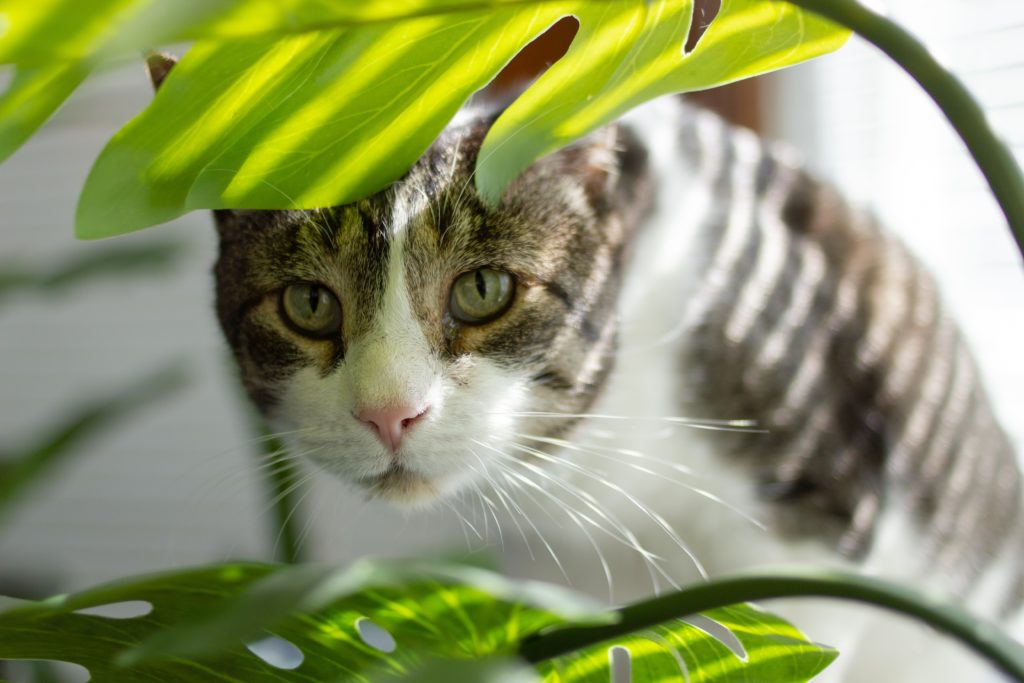String of pearls is a beautiful, unique succulent. With delicate “beads” that hang up to 3 feet past the bottom of their pot, this plant is a beautiful addition to your home. But if you’re a pet owner, you may wonder if String of Pearls is toxic to your pets.
Yes, String of Pearls is toxic to your pets. The sap inside the leaves contains a substance called pyrrolizidine alkaloid, which can cause your pets extreme discomfort if it comes into contact with their skin or is ingested. Keep this plant high above the ground where your pets can’t reach it.
Keep reading to learn more about why String of Pearls is toxic to your pet, what to do if your pet decides to eat it, and how to safely keep String of Pearls in a house with pets.
Is String of Pearls Safe for Cats/Dogs?
No, String of Pearls is not safe for cats and dogs. This plant, a part of the Senecio species, produces pyrrolizidine alkaloid—a substance that causes painful, uncomfortable side effects (that are occasionally life-threatening) in many animals, including cats and dogs.
In fact, this substance is even mildly toxic to people.
How Toxic is String of Pearls to Pets?
While String of Pearls is mildly toxic to people, it’s more toxic to small animals like cats and dogs because of their smaller size.
However, according to the ASPCA, String of Pearls typically causes moderate symptoms in pets—unless they are exposed to extreme amounts of the plant, which may cause more serious issues.
In a list of toxic plants compiled by UC Davis, String of Pearls is classified as classes 2 and 4.
Class 2, Minor Toxicity: Plants in this classification are known to cause relatively minor digestive issues when ingested, such as diarrhea or vomiting.
Class 4, Dermatitis: As well as causing an upset stomach when ingested, String of Pearls may cause a serious skin rash or irritation if it comes into contact with skin.
How Much String of Pearls is Toxic for a Pet?
Any amount of String of Pearls is toxic for your pet. The toxins build up in your pet’s system, so if they don’t exhibit symptoms immediately and continue consuming pieces of the plant, the toxicity level increases.
This means that the more your pet comes into contact with String of Pearls, the more susceptible they are to experiencing severe symptoms.
If you notice your pet playing with or eating String of Pearls, you should immediately find a new place in your home to keep it. While the symptoms of poisoning from String of Pearls are often minor, it’s best to avoid the risk altogether.
What Happens if a Cat/Dog Eats String of Pearls?
Eating String of Pearls is more harmful to pets than simply coming into contact with the plant’s sap. If your pet eats some String of Pearls, here are a few symptoms they may exhibit:
- Diarrhea
- Drooling
- Abdominal pain
- Involuntary muscle contractions
- Vomiting
- When severe, liver failure—your pet may have a swollen abdomen, dark urine, or seem depressed
If your pet ingests a small amount of String of Pearls, they’ll likely exhibit minor to moderate symptoms like diarrhea and abdominal pain.
However, if they eat a large amount of the plant, they may exhibit symptoms of liver failure, which can be life-threatening.
What to Do if Your Cat/Dog ate String of Pearls?
No matter how much String of Pearls your pet eats, your first course of action should always be calling your veterinarian. They will be able to offer knowledgeable insight as to whether your pet needs to come into the clinic or if your pet may be treated with at-home remedies.
If your veterinarian determines your pet needs further diagnostics and treatment, they will conduct several tests in the clinic.
They will begin by gathering as much information as possible about the event: how much String of Pearls your pet consumed, their previous health history, any changes in behavior, history of vaccinations, etc.
Next, the veterinarian will do a series of lab tests. These blood tests will check for toxin levels and give your vet an idea of how the plant has affected your pet, which will help determine the appropriate treatment.
If your vet feels like more information is still needed, your pet may be anesthetized, allowing for an endoscopy tube to be placed in their esophagus so that any remaining pieces of the plant may be removed.
To treat String of Pearls poisoning in your pet, your veterinarian will likely give them activated charcoal or a hydrogen peroxide medication so your pet can vomit up as much of what they’ve eaten as possible.
This will help reduce the effects of the toxins. They’ll also administer intravenous fluids to help flush toxins from the system.
Though pets need to be checked out as soon as possible after consuming String of Pearls, the likelihood of recovery is high. Early treatment is key, so be sure to have your veterinarian’s phone number on speed dial.
How to Safely Keep String of Pearls in the House?
Though String of Pearls is toxic to your pets, it is possible to safely keep this unique plant in your home. Since this plant grows long tendrils, it’s often planted in hanging baskets.
Because of this, String of Pearls can often be hung high enough to discourage pets from playing with it.
If you have cats, keeping String of Pearls can be a bit more tricky, but not impossible. Since cats can jump up on furniture and potentially come into contact with this toxic plant, it’s best to keep your String of Pearls in a room your cat can’t access.
Final Thoughts
While String of Pearls is a beautiful, easy-to-grow plant, it is toxic to cats and dogs (and even people).
If you choose to keep this vibrant plant in your home, be sure to keep it out of your pets’ reach to keep your pets safe and avoid costly vet bills.

My name is Katie, and I have had different pets at home for as long as I can remember. While I can definitely say I love all animals in general, my heart belongs to cats and dogs. I know you are supposed to choose one or the other, but I could never really decide. I’ve also owned hamsters and fish when I was a kid, and they filled my childhood with very delightful memories.



